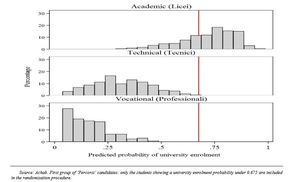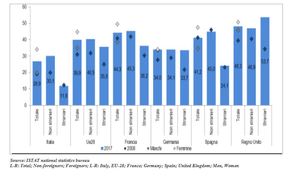Testing a Social Innovation in Financial Aid for Low-Income Students: Experimental Evidence from Italy

Italy has few graduate students. In 2017, according to ISTAT estimates, only 18.7% of Italians aged 25-64 had successfully concluded university, as against a European average of 31.4%. The gap is even wider in the 30-34 year-old population: as little as 26.9% have a degree, with respect to an EU average of 39.9%.
The national target of 26% in the 30-34 age bracket by the year 2020 was achieved, but Italy is well behind the 40% target set by the Europe 2020 Strategy. The gap becomes a chasm if we look at top ranking EU countries (Italy being last but one, before Romania): in 2016, according to Eurostat, Lithuania had 58.7% of graduates, Luxembourg 54.6%, Cyprus 53.4% and Ireland following closely.
This lack of educational opportunities engenders long-term inequalities in the lives of young Italians, but low-income families still find it hard to bear the cost of university education for their children. What is to be done, and how? Asset-building programmes are proving effective to support access to university. But how do topped-up savings actually work? An important experience: Percorsi.







 Focus (in English)
Focus (in English)